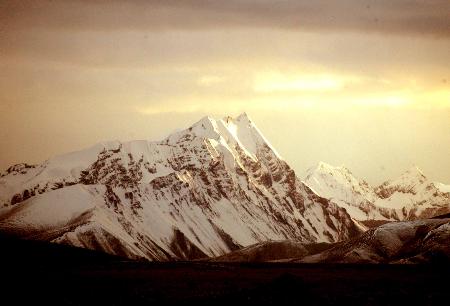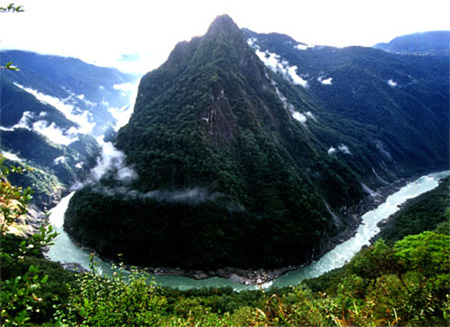Qinghai-Tibet Plateau -- A dreamy place for geologists
Tibet is an extreme-region where every geologist dreams of working, said Mark R. Handy, professor of geology at Freie Universitat Berlin.
"That is a remote desolate world full of myths. It is high enough to take Europeans' breath away in astonishment. At an average altitude of nearly 5,000 m, the Qinghai-Tibet Plateau is the highest of its kind in the world."
These remarks are exerpts from an article titled "About the Riddle of the 'Roof of the World'" carried in the Daily Mirror Newspaper.
 |
|
At an average altitude of nearly 5,000 m, the Qinghai-Tibet Plateau, the highest of its kind in the world, is renowned as "the Roof of the World." [Photo: Xinhua] |
Surrounded on three sides by ranges of high mountains, the plateau has been attracting numerous explorers and extreme climbers, but it has always been a challenge facing scientists today because some myths still have remained till now, such as how the plateau came into being, the article pointed out.
"Tibet has 14 or 15 peaks towering over 8,000 m above sea level, let alone those with an altitude of more than 7,000 m. Some valleys are even twice deeper than the Great Canyon in the U.S. That's really incredible!" Handy made no secret of his excitement on this study area.
His team defined southeastern Tibet as their research scope. There, the eastern section of the Himalayas makes a big curve of 180 degree, where the Yarlung Zangbo River cuts out the giant letter of "U, " flowing around the 7,782-m Namjiagbarwa Peak.
 |
|
Photo shows a view of the Yarlung Zangbo Canyon on the Qinghai-Tibet Plateau. [Photo: China Tibet Tourism Bureau] |
Such particular landform presents scientists a view of magnificence, and a world hidden under normal conditions, because it is here that those underground rocks have been turned up aground, according to the article.
"Rocks on the peaks were still buried 45,000 m deep beneath the earth surface about four million years ago," Handy added, "Since then, they have been elevated by almost 50,000 m. That's very fast."
Obviously, experts are still under great pressure to solve these problems still in doubt. For example, how did climate affect the formation of the plateau? Why did the deep-buried rocks get aground? How to make use of this information in earthquake prediction? Or what has happened beneath the "Roof of the World?"
All this needs more evidence to be proven. A scientific survey by the Deutsche Forschungs Gemeinschaft (DFG) financed jointly by Germany and China will go on till 2012.
 0 Comments
0 Comments






